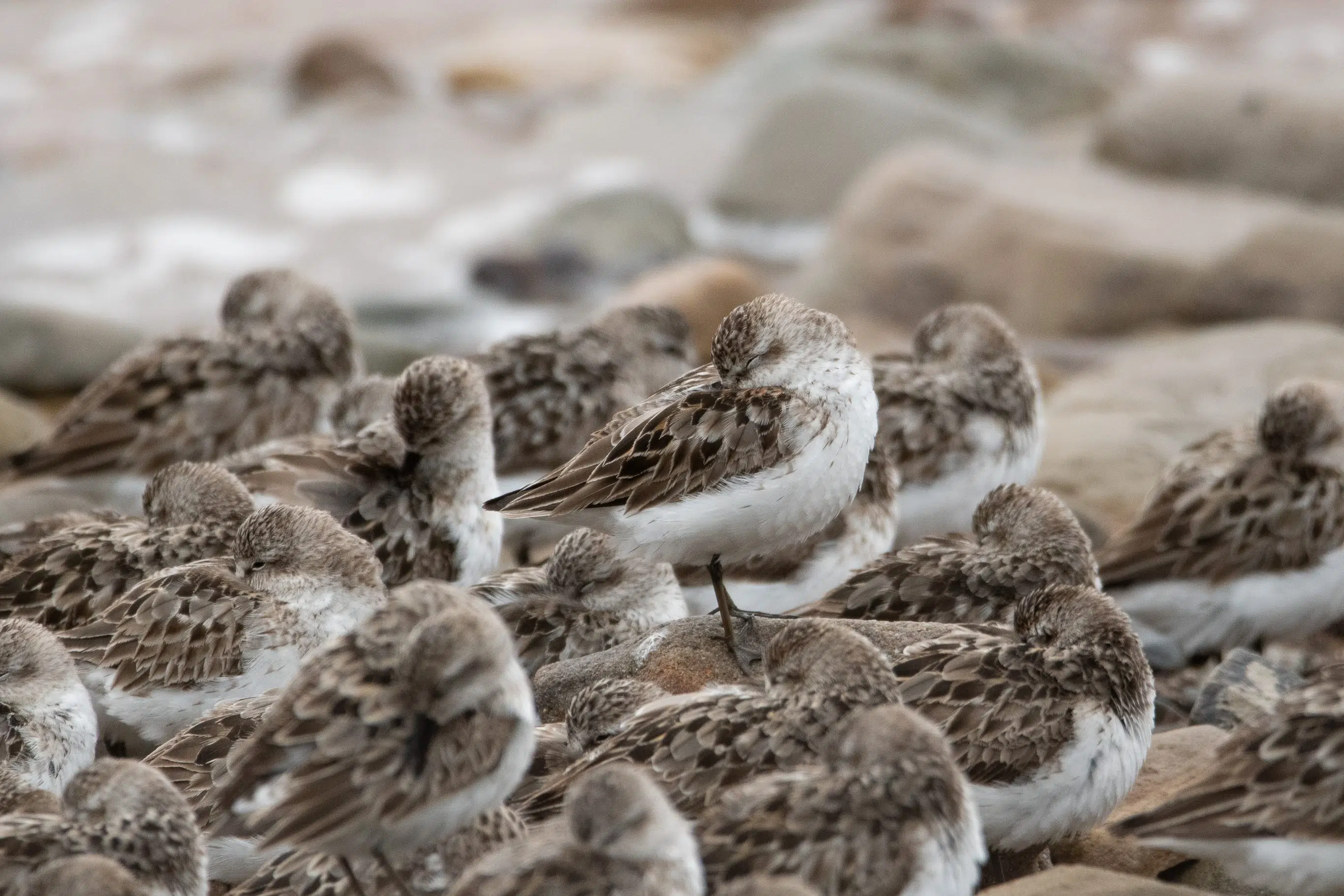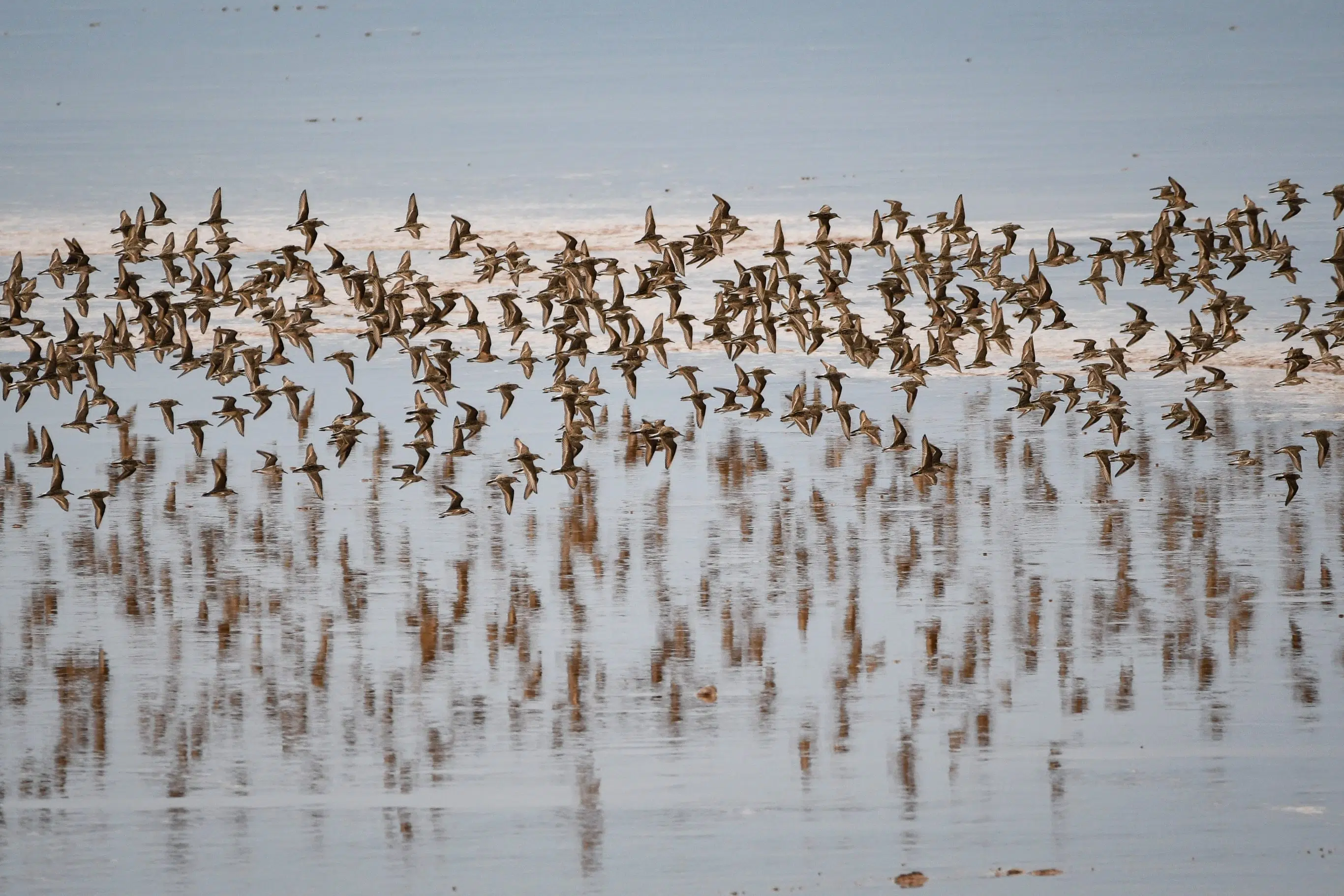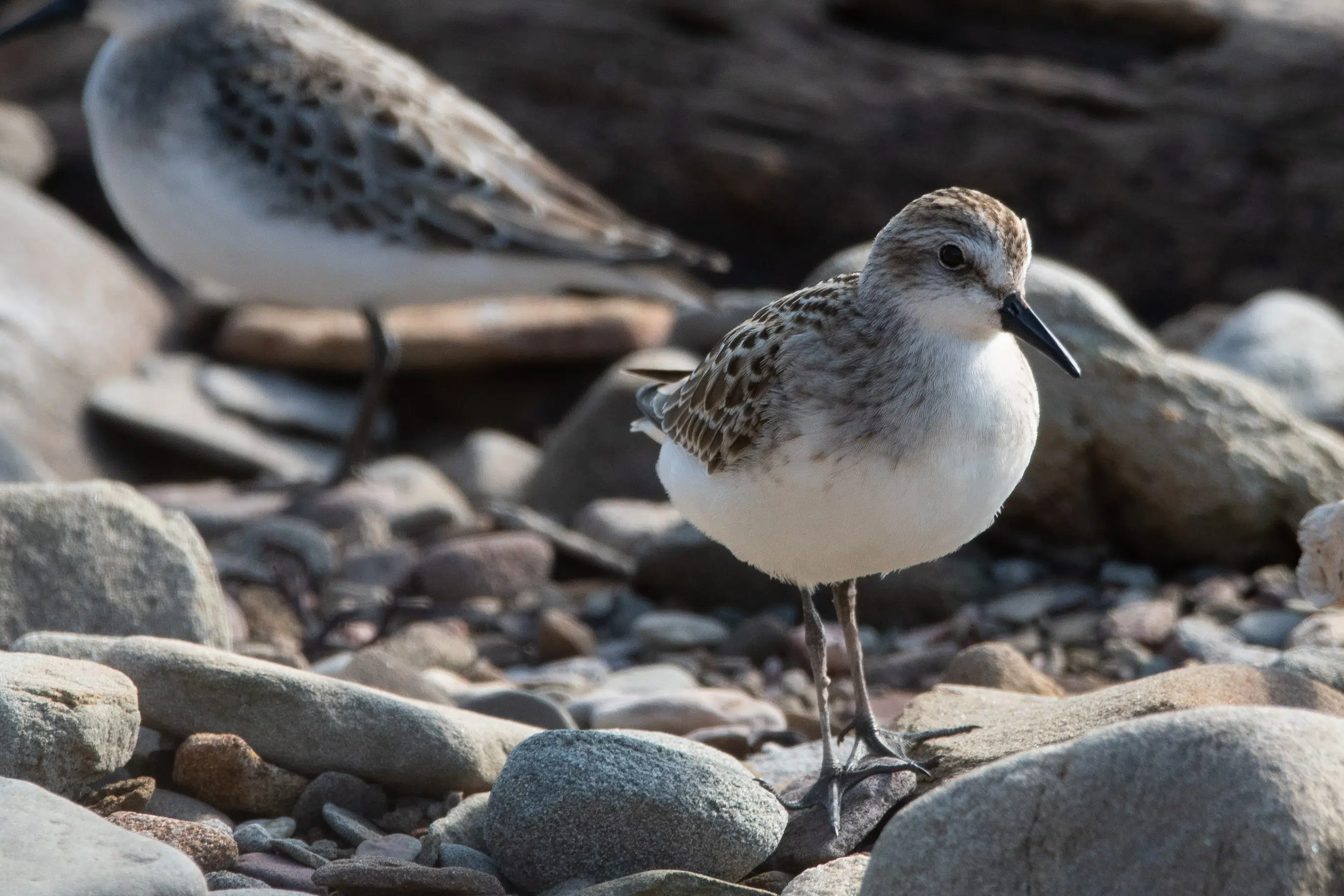Spectators from around the world are flocking to the Bay of Fundy for a rare sight.
The semipalmated sandpipers have returned there to feed.
Jordan Myles with the Johnson’s Mills Shorebird Centre says they’ve already spotted around 70,000, “The semipalmated sandpiper is a small species of shorebirds, commonly referred to as a peep because they’re so small. Every summer we get massive flocks of semipalmated sandpipers, which is about 30 per cent of the world’s population, that journey through the Bay of Fundy on their journey from their breeding grounds in the Canadian Arctic to South America where they will spend the winter.”
Last year, around 100,000 shorebirds were counted in the Bay of Fundy.
“Each bird will stay here for about three weeks feasting on the mudflats which are rich with invertebrates in order to double their weight and ensure they have sufficient energy to succeed on their 72-hour nonstop flight. The Bay of Fundy serves as a critical refuelling pit stop for the shorebirds,” Myles adds.
She adds visitors come to the Interpretative Centre from communities around the world, including Canada and the United States, European countries and even Australia.
Myles recommends visitors come to view the shorebirds anywhere from two hours before high tide, or two hours after, “That’s when the birds get pushed up onto our beaches to roost. You can see magnificent giant flocks of shorebirds just resting on the beach, they kind of look like pebbles. Every so often, if there’s a peregrine falcon attack, they will fly out over the mudflats in these really large murmurations, it’s very beautiful.”
They do ask that you stay off the beaches to help minimize the risk of disturbing the shorebirds.

(Photo: “Jordan Myles / NCC Staff”)
Visitors are encouraged to visit the centre where they have a viewing platform, along with spotting scopes and binoculars for use.
Admission to the centre is by donation.
“The Nature Conservancy of Canada is a nonprofit organization and we rely on donations from visitors, businesses, and all levels of government to be able to support our conservation efforts,” Myles adds.
She says the birds normally stick around until early September, but she expects the peak will be within the next week.
An Open House will be held on August 12, as part of the Dorchester Sandpiper Festival, “We’re predicting that is going to be one of the very best days to see the shorebirds. We encourage people to come out early in the morning for a 9 am high tide to view the shorebirds,” Myles says.

(Photo: “Jordan Myles / NCC Staff”)







